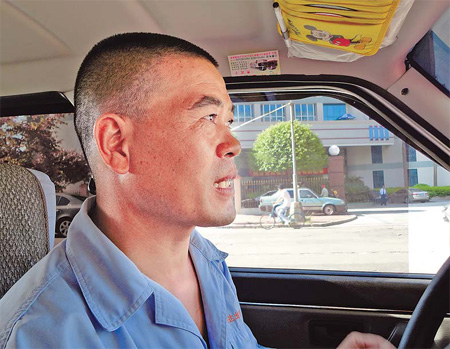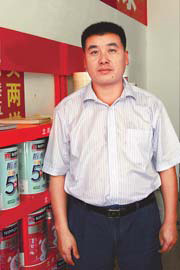Focus
Zoning in on success
By Zhang Yuchen in Guangdong, Wei Tian in Fujian and Huang Yiming in Hainan, with Li Yao (China Daily)
Updated: 2010-08-19 15:05
 |
Large Medium Small |
Thirty years after their introduction, residents reflect on the effects of special economic zones.
The initials are synonymous with success and have been credited with providing much of the driving force behind China's rapid economic development. For three decades special economic zones (SEZs) have helped change the fortunes of millions of people.
The literally groundbreaking SEZ initiative, which next week marks its 30th anniversary, was intended to enable local governments to adopt favorable measures to attract fresh investment and jobs. And it worked to such an extent that other countries soon deployed the formula.
Shenzhen, Zhuhai and Shantou in Guangdong province, Xiamen in Fujian province and the entire island of Hainan have benefited hugely, progressing in some cases from remote backwaters to thriving cities. Shenzhen, arguably the most successful of the five, developed from a small village into a city of more than 10 million people in just two decades.
After witnessing the effect the SEZs had in China, several countries copied the model, including Brazil, India, Iran, Kazakhstan, Pakistan, the Philippines, Poland, Russia, Cambodia and the Democratic People's Republic of Korea, the Economy Information Weekly, a Chengdu-based academic-oriented newspaper, reported.
As of 2007, more than 3,000 projects have been launched in SEZs in 120 countries worldwide, according to the World Bank.
Yet, there have been many bumps on the road to prosperity in China, such as a widening wealth gap and real estate bubbles. Today, as the nation's SEZs reach maturity, their traditional strengths are beginning to weaken as new challenges loom.
Inside, China Daily reporters recount the stories of five people who have witnessed firsthand the changes in China's SEZs, learning about the highs the lows they have encountered, the struggles and the accomplishments.
Driving force behind the rise

Zhang Jianping, a taxi driver from Hunan, has witnessed many changes in the city of Shantou during the past two decades. Zhang Yuchen / China Daily |
SHANTOU - Zhang Jianping has witnessed the economic ebb and flow in Shantou since 1990, when he made the city in Guangdong province his new home.
After quitting the army, the father of one originally returned to his native Xiangtan in Hunan province to till less than half a hectare of farmland with his family.
But the harvest was not enough to support them and he soon set off with his friends in search of a better life in Shantou, one of the country's five special economic zones (SEZs).
"At the first sight of Shantou I was astounded by the environment," said Zhang. "It was like a different world. Or, to put it another way, a changed world."
Before his arrival, he had heard money was easy to come by in the rapidly expanding city "but that was only for those with guangxi (connections) with the municipal officials or above".
Even without the contacts, Zhang, now 46, found Shantou offered a wealth of opportunities.
"I began to drive a taxi in the 1990s, when the first economic boom began and the many new millionaires started spending money as quickly as they collected it from foreign investors.
"They (nouveau riche) didn't seem to be prepared for the massive wealth they were making or how to spend it. I was driving many of them to the clubs and bars, where they would spend hundreds of thousands on karaoke."
At the time, Zhang was making hundreds of yuan a day and said it was the great time of Shantou's development.
"It was energetic, prosperous and there was a lot of desire," he said.
Zhang decided to invest the money he had made into a plastics factory venture with his friend from his hometown. Although his friend made a profit, he lost his savings.
"I learned that doing business is not the way I'm going to get rich," said Zhang, who abandoned his studies after elementary school.
The prosperity lasted only a couple of years and by the late 1990s, as the authority tightened the rules on the import-export trade to clamp down on smuggling, small and medium-sized enterprises were already starting to leave Shantou. As the companies moved on, so did the workforce.
"My son now works in Guangzhou where there are opportunities," said Zhang, who today earns about 4,000 yuan a month as a taxi driver. "The economic slowdown (in recent years) means Shantou is comparatively less developed.
"I'll still work here, though. At least it is better than home," he added.
Paint boss hails fantasy island
|
 Factory owner Feng Pingjun is one of the beneficiaries of the boom times in Hainan. Huang Yiming / China Daily |
Then 18 years old, he arrived in the capital of Haikou to find a city in a relatively "shabby and desolate" state, with only a handful of buildings higher than eight stories. Today, he is the proud owner of Haikou Zheqiong Coating.
"Back then, people in Hainan had no idea what coating was," said Feng, who started the company with his uncle after spotting a gap in the market. "Lime plaster was used to paint walls."
When Hainan province was established as a special economic zone (SEZ) in 1988, the island received a massive influx of labor, goods and capital. Its property sector boomed and more than 5,000 companies set up headquarters there.
Thanks to the rapid growth in the property market, coating quickly became a lucrative business.
It was not all easy sailing, though. Feng and his uncle initially run up a debt of 100,000 yuan ($15,000). Raw materials had to be imported from other parts of the country, while poor transportation links also caused constant problems. However, with little competition, their business was soon thriving.
In 1996, Feng took full control of the factory and increased daily production to three tons. Improved transport links since 2000 have also enabled him to buy in bulk, pushing output to eight tons, he said.
Haikou Zheqiong Coating has experienced every high and low of China's developing economy. Real estate bubbles and a lack of market regulations led to a bleak situation in the early 1990s, when the city was dotted with more than 16 million square meters of unfinished construction projects.
The recession hit the interior decoration materials market in 1994 but Feng said his company weathered the storm thanks to good management and his door-to-door sales skills.
In 1999, the State Council used the province's SEZ status to launch broad policy adjustments to deal with the oversupply of real estate. The move attracted companies from home and abroad to Haikou and the southern city of Sanya.
"Since 2000, the government began to remodel the unfinished buildings into new squares and skyscrapers," said Feng. "As a result, Hainan's decorating materials market flourished. Employees began to work overtime on large orders and I don't have to knock on people's doors any more."
This year, Hainan authorities also announced the island is gearing up to become an international tourism destination.
"We're getting busier and busier," added Feng. "The market demand is immense. People are earning more and the houses built in rural areas are more sophisticated. They are going to need more decorating materials."
Father laments the end of quiet lifestyle

Lin Beitian, 82, misses the tranquility of his once peaceful home in Zhuhai. Zou Zhongpin / China Daily
|
ZHUHAI - Lin Beitian admits he has never seen the attraction of the built-up areas of his native Zhuhai.
Although his four children all live in the heart of the city in Guangdong province, the 82-year-old insists he prefers the peace and quiet of his remote community 20 kilometers away in the rural suburbs.
"To an old man like me, (the city) is just too noisy," he said.
Yet, he knows the transformation that has happened over the last few decades across the rest of Zhuhai - one of five special economic zones (SEZs) established along the coast in the early 1980s - is already taking place in Yongxing village.
"Soon the village will be full of outsiders like other areas of the SEZ," said Lin. "Then the village will be wide open."
He admitted that his feelings about the changes in this small fishing community, where the first concrete road linking the area was completed in 1983, are bittersweet.
"About 400 hectares of oyster fields were buried in the earth when the road works started, which were part of the first efforts to open the village up," said Lin, who served as village chief until 1984. "Only about 32 hectares remain today."
When the SEZ plans were unveiled, there were few differences between the rural and urban parts of the city, he said, adding that, back then, the city was "covered with endless beaches".
As the vista has changed so too has people's attitudes toward the city, Lin acknowledged.
Before the SEZ was set up, villagers took every chance they could to move to Macao, with many lured by the tall, plush buildings, he said.
Once the changes began, though, everyone headed for Zhuhai after its tall towers became more visible on the horizon over the river.
About 30 households used to inhabit Yongxing village but now only 13 remain, explained Lin.
Although apprehensive, he also feels a sense of pride about the changes that have occurred around him.
"In the 1970s, I never thought that one day my village would have electricity and that my city would be one of China's thriving SEZs," added Lin. "No longer do the people here envy or desire the life in Macao."
Working toward a good environment, not economy

Zhang Yuxia, who owns an elderly care home in Xiamen, Fujian province, talks to one of her residents. She believes quality of life is more important than being wealthy. Wei Tian / China Daily |
XIAMEN - Known for its blue waters and clear skies, the city of Xiamen in Fujian province is rather different from China's other four special economic zones (SEZs).
It may not have an economy as developed as Shenzhen or have the reputation for vibrant industrial innovation like Shantou, yet what it has in spades is quality of life, say residents.
"What we are proud of is the relaxing lifestyle and high level of happiness in the city," said Zhang Yuxia, who has lived in the city for more than two decades.
Ranked sixth in terms of environmental protection and 10th in infrastructure, according to official studies, Xiamen is a city where the residents "realize what needs to be cherished after seeing what damage blind development can do", said the 40-year-old, who owns the Aixin Elderly Apartments.
"Had it not been for the comfortable lifestyle here, I wouldn't have achieved accomplishments in my care home business," she added.
Aixin Elderly Apartments were opened in 2002 and is about to celebrate the 100th birthday of Lan Jingyu, its fourth resident to reach the landmark age. Located in a modern six-story building in the city's Jimei district, close to a sandy beach lined with palm trees, it is home to about 67 elderly people.
"Many people from across the nation and even abroad choose to spend their later years in this heavenly island," said Zhang.
Like many who flocked to the SEZ in the 1980s, Zhang wanted to take advantage of the boom times. Yet things changed dramatically in 1995 when her mother, who suffered with a mental illness, came to stay with her.
At the time she was working as a salesperson for a fishery and did not have the time or money to care for her.
"I searched the island but there was no suitable place for her to live, except for a mental hospital," she said, explaining that she was forced to send her mother back home to Yunxiao, a county in southern Fujian province. A few months later, her mother went missing.
"I've been searching for her for a decade," said the elderly care home boss, crying. "As hope faded, I realized it was time for my generation to give something back to the elderly."
Aixin Elderly Apartments has 17 nurses, while volunteers from nearby colleges also visit regularly to help care for the residents.
"It's good to know the next generation cares about others, especially the elderly," said Zhang. "For Xiamen, that's something even more important than a healthy economy and livable environment."
A metropolis built on rolling stones

Liu Botong from Northeast China still does not feel Shenzhen is his home, even after staying in the city for three years. Zou Zhongpin / China Daily |
SHENZHEN - Liu Botong became a genuine citizen of Shenzhen just three days ahead of the city's 30th anniversary - but despite what his new identity card says, he still does not feel like it is his home.
"The city has one of the most multiple-strata societies but offers no sense of belonging," said the 28-year-old as he stood in front of a billboard praising the changes that have occurred in the city over the last three decades, making it one of Guangdong province's most important industrial centers.
"I did feel happy to be part of its birthday celebrations, though," he added.
Liu, like many migrant workers from the country's inland who are taking advantage of the opportunities in China's first special economic zone (SEZ), knows he is only there to work, not to live.
"I can build my future here," said the graduate, who hails from Harbin, capital of Heilongjiang province.
After arriving in Shenzhen to sit the civil service entrance exam in 2007, the executive assistant of a jewelry company said he was struck by the city's modern atmosphere.
"The first lesson I learned was to shorten my speech," he recalled. "One telephone call should be ended within three sentences - the speed needed in an SEZ. No one has time to listen to the redundant sentences."
Liu failed the civil service exam (as he did again the next year) and instead decided to join the ranks of the migrant workers. In just three years, he has moved nine times across various districts. Different generations have different opinions about the changes that have occurred in the city and Liu believes it is getting harder to succeed than in the early stages of the SEZ.
He explained that his cousin arrived in Shenzhen 10 years ago and now owns four properties.
"The city has matured over the 30-year development process and, as a newcomer, I can enjoy the work of my predecessors who built the city," he said. "But many of those predecessors have already left for other cities.
"Every two or three years, a crowd of young people leave and another comes," he added. "I need to find my role every day. That is what this city has taught me."